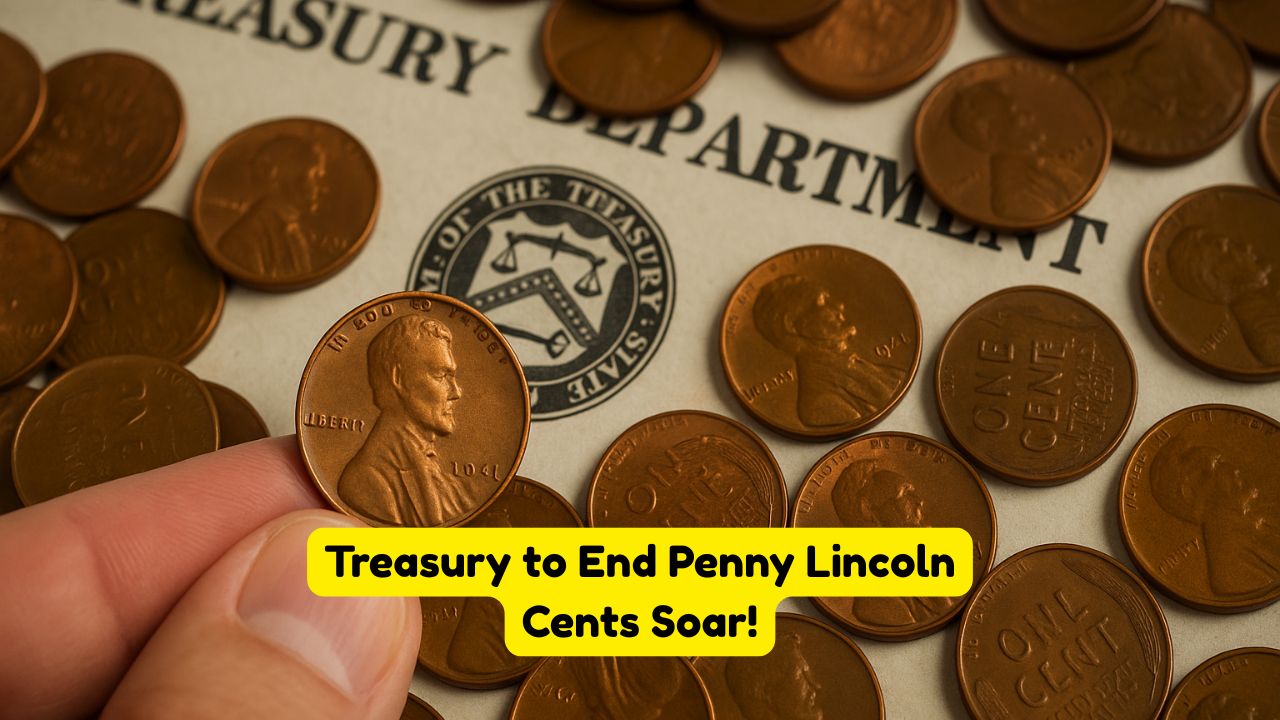Rare Lincoln Cents – The U.S. Treasury has officially hinted at the possibility of phasing out the penny, sparking a wave of excitement and concern across the nation. For decades, Americans have debated whether the one-cent coin still holds value in modern society, especially considering the rising costs of production and the fact that pennies are rarely used in daily transactions. With inflation driving up expenses, many experts argue that eliminating the penny could save the government millions annually. At the same time, collectors and everyday citizens are realizing that this shift could drastically increase the value of rare Lincoln cents, turning them into treasures worth a fortune. From wheat pennies minted in the early 1900s to error coins that slipped through the cracks of production, collectors are eagerly reassessing their coin jars. This announcement has not only reignited debates about currency efficiency but also triggered a surge of interest in coin collecting, as ordinary pennies could soon become a symbol of history and unexpected wealth.
Why the U.S. Might Retire the Penny
The discussion about retiring the penny isn’t new, but the latest Treasury statement has given it fresh urgency. The primary reason is cost: it currently takes more than one cent to produce a single penny, leading to significant losses for the government. In a time when every dollar counts, continuing to mint a coin that costs more than its worth seems impractical. Furthermore, the penny’s role in everyday transactions has diminished as consumers and businesses increasingly rely on cards, apps, and digital wallets. Many retailers already round totals to the nearest nickel when cash is used, making the penny more of a nuisance than a necessity. Removing it could streamline commerce while saving taxpayer money. However, such a move also carries sentimental weight, since the penny has been part of American life since the late 18th century. For many, the Lincoln cent represents tradition, patriotism, and even good luck, adding emotional complexity to the debate.
Rare Pennies Now Becoming Extremely Valuable
As news spreads that the penny may soon be discontinued, collectors are rushing to evaluate their holdings, and the value of rare Lincoln cents is skyrocketing. Not all pennies are equal—some are highly sought after due to age, design, or minting errors. Wheat pennies from 1909 to 1958 are already popular among collectors, but certain variations, like the 1909-S VDB or the 1943 copper penny, can fetch tens of thousands, even hundreds of thousands, at auction. Error coins, such as double-die strikes or misprints, are also incredibly valuable. What once sat unnoticed in a change jar could suddenly represent life-changing money for those lucky enough to own one. As more Americans become aware of this potential windfall, the market for collectible pennies is heating up. Coin dealers are reporting increased demand, and online platforms are seeing bidding wars for rare Lincoln cents, making them not just historic artifacts but financial opportunities.
How Ending the Penny Impacts Everyday Americans
The elimination of the penny would bring changes beyond coin collections, directly affecting everyday transactions and the economy at large. While digital payments dominate, cash transactions are still common, especially in rural areas and among older generations. If the penny disappears, businesses may need to adjust pricing and rounding practices, which could initially confuse consumers. Supporters argue that rounding will balance out over time, while critics worry about potential price increases, especially impacting low-income households. On the positive side, taxpayers could save millions in production costs, and commerce could become more efficient. For ordinary people, the most exciting impact is the chance to discover hidden treasures in old coin jars, drawers, or piggy banks. A penny once ignored may now be worth thousands, making this transition not just an economic shift but also a surprising opportunity for wealth creation in unexpected places.
The Future of U.S. Currency and Collectibles
Looking ahead, the end of the penny could signal broader changes in how Americans view and use physical currency. With the rise of digital payments, coins and even small paper bills may eventually face the same scrutiny. The nickel, for example, also costs more to produce than its face value, raising questions about its future. At the same time, discontinuing coins often increases their collectible value, creating a new generation of investors and hobbyists. For Lincoln cents, their legacy may continue not in everyday commerce but in collections, auctions, and historical showcases. Museums, schools, and private collectors may work harder to preserve these coins as symbols of American culture. The penny’s retirement could mark the end of an era, but it also opens doors to new ways of thinking about money, history, and value. Whether viewed as an inconvenience or a treasure, the humble penny is once again at the center of national conversation.
